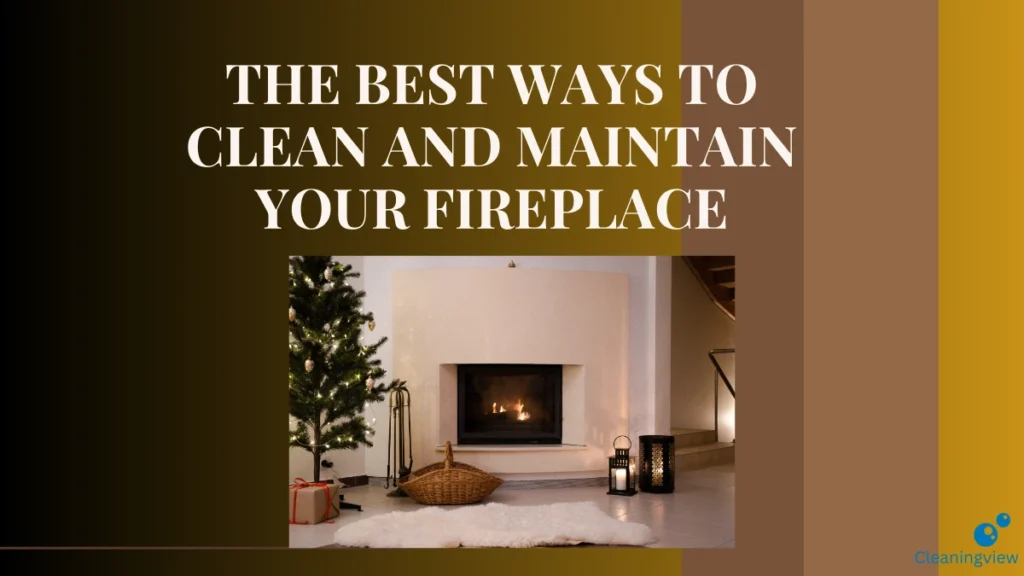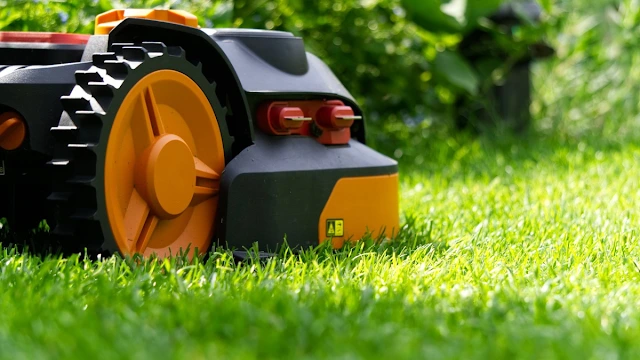
Learn how to keep your fireplace clean and safe with expert tips on cleaning, maintenance, and safety precautions. This comprehensive guide covers all types of fireplaces, from wood-burning to gas and electric.
Introduction
A fireplace can be a beautiful and functional addition to any home. However, it requires regular cleaning and maintenance to ensure it is safe and efficient. In this article, we will discuss the best ways to clean and maintain your fireplace.
Types of Fireplaces
Before we dive into cleaning and maintenance, it is important to understand the different types of fireplaces.
Wood-burning fireplaces: These are the most common type of fireplace. They burn wood logs to produce heat.
Gas fireplaces: These fireplaces use natural gas or propane as fuel. They can be vented or ventless.
Electric fireplaces: These fireplaces use electricity to produce heat and a flame-like effect.
Cleaning Your Fireplace
Cleaning your fireplace is essential to prevent creosote buildup, which can be a fire hazard. Here are some tips for cleaning your fireplace:
Remove ashes: After each use, remove the ashes from the fireplace using a shovel or ash scoop. Be sure to wear gloves and a mask to protect yourself from dust.
Clean the glass: Use a fireplace glass cleaner to remove soot and smoke stains from the glass.
Inspect the flue: The flue is the chimney pipe that carries smoke and gases out of the fireplace. Inspect the flue for any blockages or damage.
Sweep the chimney: A professional chimney sweep should clean your chimney at least once a year. This will remove creosote buildup and ensure your fireplace is safe to use.
Maintaining Your Fireplace
In addition to cleaning your fireplace, there are several other things you can do to maintain it.
Inspect the damper: The damper is a valve that controls the flow of air into the fireplace. Ensure the damper is working properly and is closed when the fireplace is not in use.
Check the firebox: The firebox is the area where the fire burns. Inspect the firebox for any damage or cracks.
Inspect the chimney liner: The chimney liner is a metal pipe that runs inside the chimney. Inspect the chimney liner for any damage or corrosion.
Store wood properly: If you use a wood-burning fireplace, store your wood properly to prevent it from becoming wet or moldy.
Cleaning a Gas Fireplace
Gas fireplaces require less maintenance than wood-burning fireplaces, but they still need to be cleaned regularly. Here are some tips for cleaning a gas fireplace:
Clean the burner: The burner is the part of the fireplace that ignites the gas. Clean the burner with a soft-bristled brush or a vacuum cleaner attachment.
Clean the glass: Use a fireplace glass cleaner to remove soot and smoke stains from the glass.
Inspect the pilot light: Ensure the pilot light is lit and burning steadily.
Have the fireplace serviced: It is recommended to have your gas fireplace serviced by a professional every year.
Cleaning an Electric Fireplace
Electric fireplaces are relatively easy to clean. Here are some tips:
Wipe down the exterior: Use a soft cloth to wipe down the exterior of the fireplace.
Clean the glass: Use a fireplace glass cleaner to remove soot and smoke stains from the glass.
Inspect the heating element: Ensure the heating element is clean and free of debris.
Safety Tips
When cleaning or maintaining your fireplace, it is important to follow safety precautions.
Turn off the power: If you have a gas or electric fireplace, turn off the power before cleaning or maintaining it.
Wear protective gear: Wear gloves, a mask, and eye protection when cleaning your fireplace.
Open the damper: If you have a wood-burning fireplace, open the damper before cleaning it to allow smoke and fumes to escape.
Avoid using flammable liquids: Never use flammable liquids to clean your fireplace.
Wood-Burning Fireplaces
Creosote Removal: Creosote is a byproduct of burning wood. It can build up in your chimney and create a fire hazard.
Chemical Creosote Removers: These products can help break down creosote buildup. Follow the manufacturer’s instructions carefully.
Mechanical Cleaning: A professional chimney sweep can use brushes and other tools to physically remove creosote.
Chimney Inspection: Regular inspections can help identify potential problems early on. Look for cracks, leaks, or blockages.
Wood Storage: Proper wood storage can impact the amount of creosote produced. Store wood outdoors, away from moisture and pests.
Gas Fireplaces
Burner Cleaning: A dirty burner can reduce efficiency and cause uneven flames. Use a soft-bristled brush or a vacuum cleaner attachment to clean it.
Pilot Light Inspection: Ensure the pilot light is lit and burning steadily. A weak pilot light can cause ignition problems.
Vent Inspection: Inspect the vent for obstructions or damage. A blocked or damaged vent can create carbon monoxide buildup.
Electric Fireplaces
Heating Element Cleaning: Dust and debris can accumulate on the heating element, reducing its efficiency. Use a soft cloth to gently wipe it clean.
Power Cord Inspection: Check the power cord for signs of wear or damage. Replace any damaged cords immediately.
Ventilation: Ensure the fireplace has adequate ventilation to prevent smoke buildup.
General Maintenance Tips
Regular Inspections: Conduct regular inspections of your fireplace to identify potential problems early on.
Professional Cleaning: Consider hiring a professional chimney sweep for annual cleanings, especially if you burn wood regularly.
Fireplace Screen: Use a fireplace screen to prevent sparks and embers from flying out.
Fireplace Tools: Keep essential tools like a poker, tongs, and a brush handy for cleaning and maintenance.
Carbon Monoxide Detector: Install a carbon monoxide detector near your fireplace to monitor air quality.
Safety First: Always prioritize safety when cleaning or maintaining your fireplace. Follow manufacturer’s instructions and wear appropriate protective gear.
Conclusion
Regular cleaning and maintenance are essential for keeping your fireplace safe and efficient. By following the tips in this article, you can ensure your fireplace is in good working condition and provides you with many years of warmth and enjoyment.
FAQs About Fireplace Cleaning and Maintenance
1. How often should I have my chimney cleaned?
The frequency of chimney cleanings depends on several factors, including the type of fuel you use, the frequency of use, and the amount of creosote buildup. Generally, it’s recommended to have your chimney cleaned at least once a year, but more frequent cleanings may be necessary if you burn wood regularly or have a history of creosote buildup.
2. Can I clean my own chimney?
While it’s possible to clean your own chimney, it’s generally recommended to hire a professional chimney sweep. Chimney cleaning can be dangerous and requires specialized equipment and knowledge. A professional can ensure that your chimney is thoroughly cleaned and inspected for any potential problems.
3. How do I know if there’s a creosote buildup in my chimney?
Creosote buildup can be difficult to detect on your own. However, if you notice a decrease in airflow, a sooty smell, or a decrease in the efficiency of your fireplace, it could be a sign of creosote buildup.
4. Can I use a vacuum cleaner to clean my fireplace?
Yes, you can use a vacuum cleaner with a specialized attachment to clean your fireplace. However, it’s important to be careful not to create a dust cloud that can irritate your lungs.
5. How do I prevent creosote buildup?
There are several things you can do to prevent creosote buildup, including burning dry, seasoned wood, using a fireplace damper, and having your chimney cleaned regularly. Additionally, using a fireplace insert or a catalytic converter can help reduce creosote formation.
Read More
https://cleaningview.ca/how-to-clean-dining-room-windows-and-curtains/
Important: The information provided here in the post is for general informational purposes only. It should not be taken as professional or any other type of advice. Always seek the advice of a qualified professional before implementing this information on your own. Thank you!
Add CleaningView To Your Google News Feed


